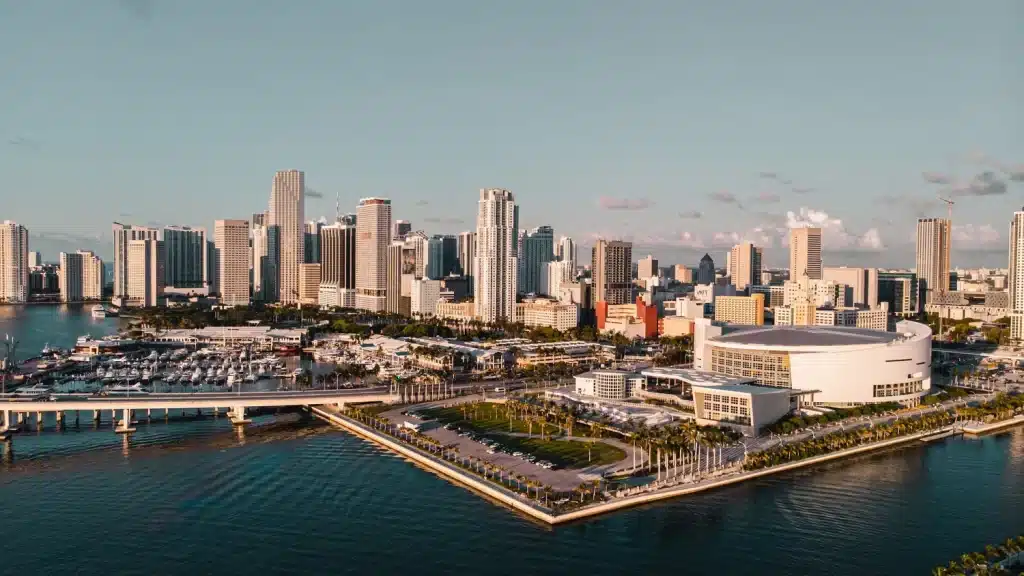Urban areas are at the forefront of climate change, facing extreme weather events, rising sea levels, and increasingly unpredictable environmental conditions. As population density grows, cities are under immense pressure to protect residents, infrastructure, and economies. Around the world, municipalities are adopting innovative strategies to enhance resilience, reduce climate risks, and create more sustainable urban environments. In 2025, these efforts have become more urgent, creative, and technologically sophisticated than ever.
Cities are no longer passive victims of climate change—they are active innovators. From green infrastructure and smart technology to community-driven initiatives, cities adapting to climate challenges are reshaping urban life. This article explores the latest trends, real-world examples, and actionable insights for urban resilience in 2025.

The Intensifying Climate Threats in Urban Areas
Cities concentrate both people and economic activity, making them particularly vulnerable to climate change. Extreme weather events affect urban populations in ways that are more immediate and disruptive than in rural areas. Key urban climate challenges include:
- Extreme heat: Urban heat islands amplify summer temperatures, increasing health risks and energy demand for cooling.
- Flooding: Coastal and riverine cities face rising sea levels and intense rainfall that overwhelm drainage systems.
- Air pollution: Higher temperatures worsen air quality, aggravating respiratory illnesses and reducing overall well-being.
- Infrastructure strain: Roads, bridges, and utilities are vulnerable to weather extremes, affecting transport, energy, and public services.
The UN-Habitat estimates that by 2030, 60% of the global population will live in cities, many of which are highly exposed to climate risks (UN-Habitat, 2022). As these populations grow, urban resilience becomes not just a policy priority but a survival strategy.
Innovative Solutions Emerging in 2025
Cities worldwide are experimenting with a mix of nature-based, technological, and social solutions to adapt to climate change. These initiatives are not only addressing immediate risks but also creating long-term sustainability.
1. Urban Green Spaces and Heat Mitigation
Urban greenery has emerged as a critical tool for combating extreme heat and improving urban livability. Cities are integrating parks, tree canopies, vertical gardens, and green roofs to lower surface temperatures and enhance air quality.
- Singapore’s “City in a Garden” initiative continues to transform urban landscapes, incorporating greenery into buildings, streets, and community spaces.
- New York City has launched extensive tree planting programs and reflective surface installations in heat-prone neighborhoods, reducing local temperatures by several degrees (NYC Environmental Protection, 2023).
Why it matters: Urban green spaces not only reduce heat but also improve mental health, enhance biodiversity, and increase property values. In addition, they provide natural stormwater absorption, reducing flood risks.
2. Flood Resilience and Smart Water Management
Flooding poses one of the most immediate threats to urban areas, particularly in low-lying and coastal cities. Innovative solutions combine infrastructure adaptation, nature-based solutions, and predictive technology:
- Rotterdam, Netherlands has developed floating neighborhoods, water plazas, and permeable streets that absorb excess rainfall, turning flood-prone areas into multifunctional spaces.
- Bangkok, Thailand employs AI-driven flood monitoring systems, real-time water sensors, and emergency alert networks to manage water levels proactively (World Bank, 2023).
Additional strategies:
- Constructing wetlands and retention basins to store rainwater.
- Elevating critical infrastructure in flood-prone zones.
- Encouraging community-level flood preparedness programs.
By integrating these measures, cities are moving from reactive flood responses to proactive resilience.
3. Sustainable Transportation and Emissions Reduction
Transportation is a significant contributor to urban heat, air pollution, and carbon emissions. Cities adapting to climate challenges are prioritizing low-carbon mobility through:
- Electric and hybrid public transportation: Cities like Los Angeles and Oslo are expanding electric bus fleets, charging infrastructure, and incentives for electric vehicles.
- Pedestrian and bike-friendly infrastructure: Urban planning encourages walking and cycling, reducing traffic congestion and improving public health.
- Congestion pricing: Limiting high-emission vehicles in city centers to reduce both air pollution and urban temperatures.
Impact: Transitioning to sustainable transportation reduces greenhouse gas emissions, lowers urban heat levels, and promotes healthier lifestyles, creating a long-term win for both the environment and residents.
4. Climate-Resilient Buildings and Infrastructure
Urban resilience depends heavily on infrastructure designed to withstand climate stressors. Cities are revising building codes and construction practices to ensure long-term durability:
- Tokyo, Japan, mandates flood and earthquake-resistant buildings and encourages green roofs to reduce urban heat.
- Elevated structures in flood-prone areas and the use of heat-reflective, energy-efficient materials in construction are becoming more common in cities like Miami, USA.
- Retrofitting older buildings with insulation, energy-efficient cooling systems, and water management solutions is another growing trend.
Key takeaway: Climate-adaptive construction reduces repair costs, protects residents, and ensures continuity of urban functions during extreme weather events.
5. Leveraging Technology and Big Data for Climate Resilience
Smart cities are increasingly using data-driven strategies to anticipate, manage, and mitigate climate impacts:
- Predictive analytics: Cities like Barcelona employ simulations and predictive models to assess how extreme weather will affect traffic, energy consumption, and infrastructure.
- Real-time monitoring: Sensors track air and water quality, detect flooding risks, and monitor energy usage.
- Digital twins: Advanced 3D models simulate urban systems under different climate scenarios, helping planners make informed decisions.
Example: In Barcelona, integrated data systems optimize energy distribution, water management, and transportation, improving overall resilience while reducing environmental impact.
6. Community Engagement and Education
While technology is crucial, community participation remains central to successful climate adaptation:
- Urban gardening and tree planting programs engage residents in local climate solutions.
- Community workshops educate citizens about energy conservation, flood preparedness, and sustainable transportation.
- Participatory planning allows residents to influence policies, ensuring that solutions are equitable and culturally relevant.
Cities that involve citizens not only improve compliance but also foster social cohesion, which is critical during climate crises.
7. Policy Innovation and Cross-Sector Collaboration
Effective climate adaptation requires policy innovation and collaboration:
- Incentives for green infrastructure and renewable energy adoption encourage businesses and developers to invest in sustainable solutions.
- Public-private partnerships accelerate innovation, particularly in technology and urban planning.
- Global city networks, such as C40 Cities, facilitate knowledge sharing, helping urban centers adopt best practices faster.
Insight: Policy frameworks that integrate climate risk management with urban planning lead to more resilient, future-proof cities.
Challenges Facing Urban Climate Adaptation
Despite progress, cities face several obstacles:
- Funding limitations: Large-scale infrastructure projects require significant investments.
- Aging infrastructure: Older urban systems are difficult and costly to retrofit.
- Socioeconomic disparities: Vulnerable populations are disproportionately affected by climate impacts.
- Uncertainty in projections: Climate models are complex, and long-term predictions can be difficult to translate into actionable plans.
Addressing these challenges requires innovative financing models, robust urban planning, and inclusive policies.
Looking Ahead: A Resilient Urban Future
The next decade will be crucial for cities adapting to climate challenges. Key trends shaping the future of urban resilience include:
- Integration of technology with nature-based solutions for smarter, greener cities.
- Inclusive planning that ensures all residents, particularly vulnerable populations, benefit from climate adaptation efforts.
- Scalable, adaptable infrastructure that can respond to unexpected environmental changes.
- Cross-border collaboration to share successful strategies and lessons learned.
By embracing innovation and collaboration, cities can transform climate challenges into opportunities for sustainable growth and improved quality of life.
Conclusion
Urban resilience is no longer optional; it is essential. Cities around the world are pioneering solutions to heat, flooding, pollution, and emissions through green infrastructure, smart technology, and community engagement. By continuing to innovate and adapt, urban areas can safeguard residents, economies, and ecosystems against the escalating threats of climate change. The cities that succeed in 2025 will serve as models for the world, proving that proactive adaptation is possible—and necessary—for a sustainable future.
References
- UN-Habitat. (2022). Urbanization and Climate Change. Available at: https://unhabitat.org (Accessed: 21 August 2025).
- NYC Environmental Protection. (2023). Urban Heat Island Effect and Mitigation Strategies. Available at: https://www.nyc.gov/assets/dep (Accessed: 21 August 2025).
- World Bank. (2023). Flood Risk Management in Asian Cities. Available at: https://www.worldbank.org (Accessed: 21 August 2025).









